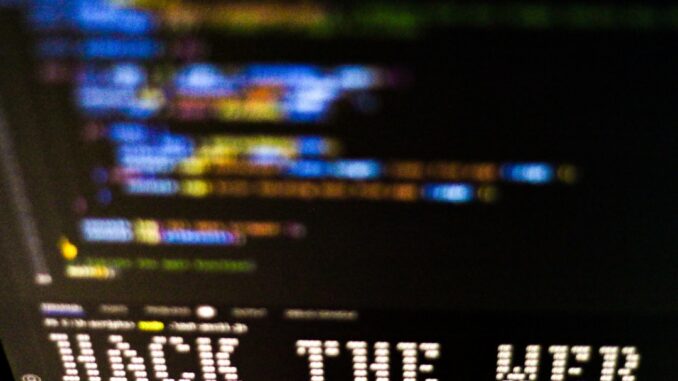
Summary
Community Dental Care suffered a cyberattack on December 6, 2024, exposing the personal and protected health information of 135,770 individuals. The exposed data included names, addresses, Social Security numbers, medical information, and more. Community Dental Care is offering affected individuals complimentary credit monitoring and identity theft protection services.
Safeguard patient information with TrueNASs self-healing data technology.
** Main Story**
Community Dental Care Hit by Cyberattack: A Wake-Up Call for Data Security
Okay, let’s talk cybersecurity – specifically, the recent Community Dental Care (CDC) data breach. This wasn’t just a minor hiccup; it was a full-blown cybersecurity nightmare. Imagine waking up one morning to find out that your personal information, the kind you trust only to your doctor, has been compromised. That’s the reality for over 135,000 individuals affected by this incident. And it’s a stark reminder that even non-profits aren’t immune to sophisticated cyberattacks.
CDC, a Minnesota-based non-profit providing dental healthcare, suffered the attack around December 6, 2024. It wasn’t until December 20th that the breach was discovered. The fallout? The sensitive data of patients and employees alike was exposed. How could this have been prevented?
What Information Was Exposed?
This is the really scary part. The bad actors potentially accessed names, addresses, dates of birth, Social Security numbers – the whole shebang. Driver’s license numbers, passport numbers, medical details, even health insurance information were all at risk. While not everyone had all their data exposed, the sheer scale of the breach is alarming.
I remember a similar case a few years back where a smaller clinic was hit, and it took them months to recover. Patients were understandably furious. This CDC breach is on a whole other level, though.
The Immediate Response
To their credit, CDC moved quickly once they realized what had happened. They shut down their systems, brought in a cybersecurity firm for a forensic analysis, and notified law enforcement, including the FBI and the Department of Health and Human Services. They even reported it to consumer reporting agencies. Affected individuals started receiving notification letters around March 28, 2025, with details and advice on protecting themselves. Still, the damage was done. A notification letter is great, but can it replace the peace of mind that’s been lost?
Legal Repercussions and Personal Risks
Unsurprisingly, law firms are already circling, investigating potential legal action. And rightly so, you could argue. The personal implications are huge. Identity theft, fraud – these are real threats now for those affected. Think about the hours spent monitoring accounts, the anxiety of wondering if your identity will be stolen. That’s a heavy burden to carry. You need to be vigilant, and consider extra security measures, like freezing your credit.
- Increased Risk of Identity Theft: Monitor your credit reports and financial accounts for any suspicious activity.
- Potential for Fraud: Be wary of phishing scams or attempts to obtain your personal information.
- Long-Term Vigilance: The full impact of this breach may not be known for years, so continued vigilance is crucial.
Lessons Learned and Future Prevention
This breach is a major wake-up call for the healthcare industry. It underscores just how vulnerable these organizations are and the importance of robust cybersecurity measures. CDC says they’ve implemented additional security measures, which is good news, but the cyber threat landscape is constantly evolving. They’ll need to stay ahead of the curve. It also begs the question, how many other healthcare providers are similarly exposed?
As of today, June 27, 2025, investigations are ongoing. And you know what? This situation could evolve, and new information might surface. So, stay informed, stay vigilant, and take steps to protect your data. It’s not just CDC’s responsibility; it’s ours too. Ultimately, we all have a role to play in safeguarding our digital lives. And don’t think, just because you aren’t a huge business this couldn’t happen to you. It could!


The CDC breach highlights the critical need for robust data encryption and access controls, especially within healthcare. What strategies can smaller organizations implement to achieve enterprise-level security without prohibitive costs, perhaps through open-source solutions or collaborative cybersecurity initiatives?
That’s a great point about open-source solutions and collaborative initiatives. Exploring community-driven cybersecurity programs could be a game-changer for smaller healthcare providers. Pooling resources and expertise could make enterprise-level security more accessible. Anyone know of successful examples of this in practice?
Editor: MedTechNews.Uk
Thank you to our Sponsor Esdebe
The rapid response by Community Dental Care, including shutting down systems and engaging cybersecurity experts, highlights the importance of a well-defined and practiced incident response plan. Regular simulations and updates to these plans are essential for all organizations, regardless of size, to minimize damage from potential breaches.
That’s a great point! The speed of response is so critical in these situations. Do you think there are specific elements of an incident response plan that are most often overlooked by organizations, leading to slower or less effective containment?
Editor: MedTechNews.Uk
Thank you to our Sponsor Esdebe